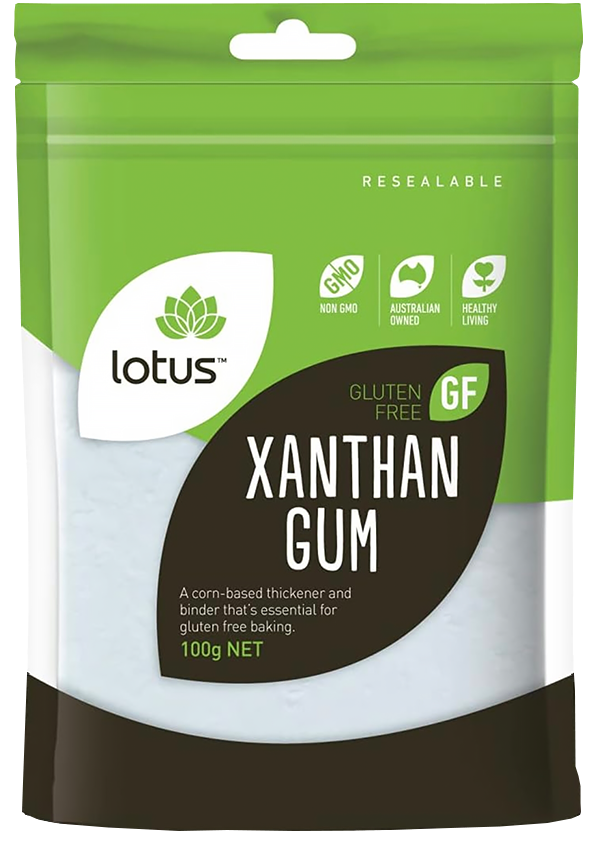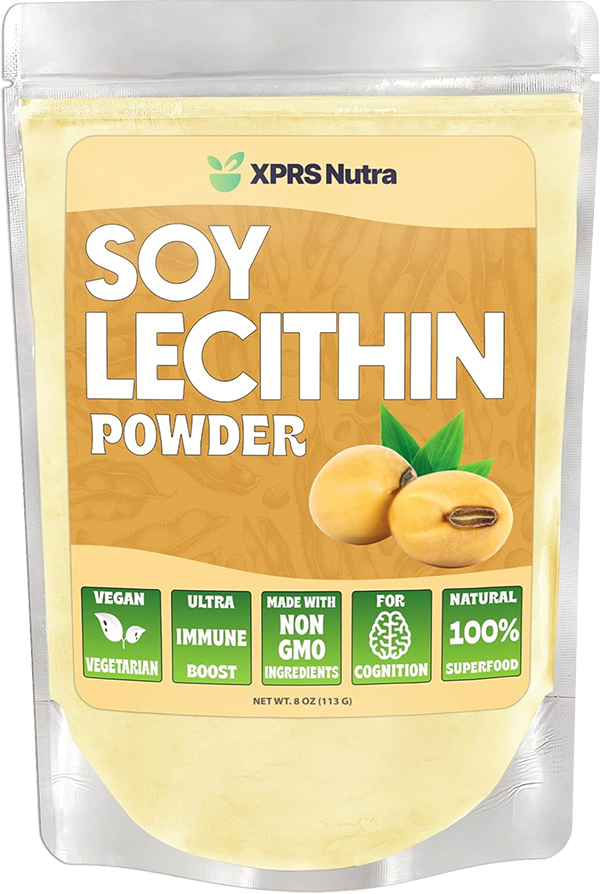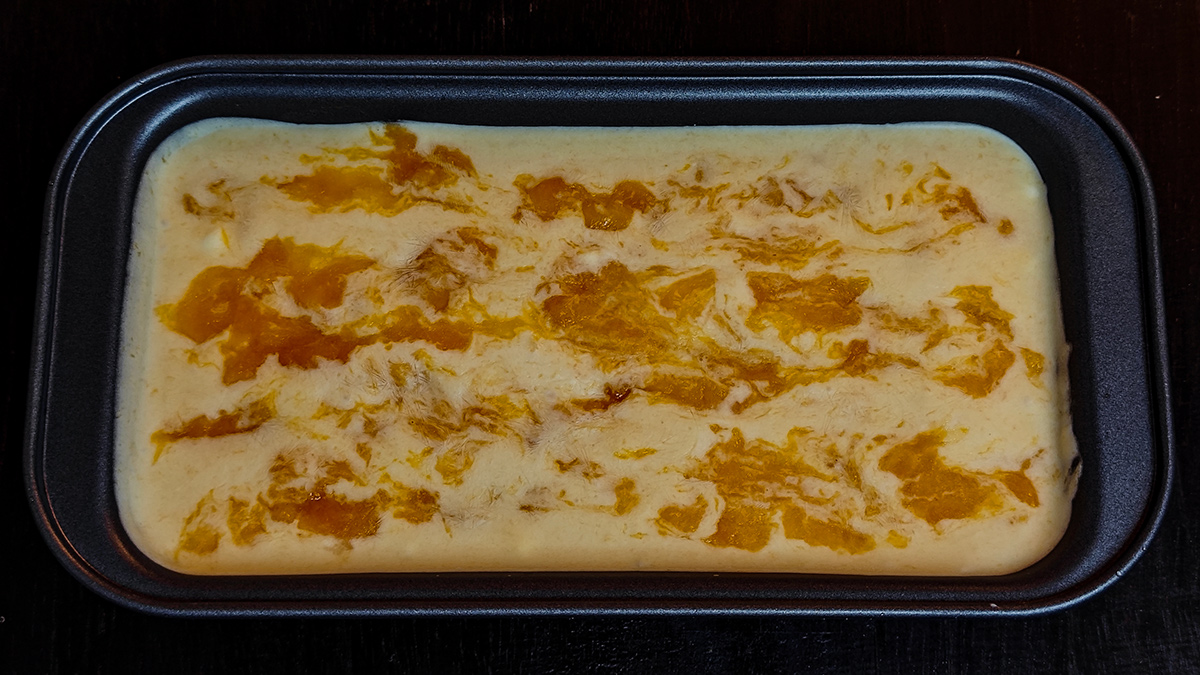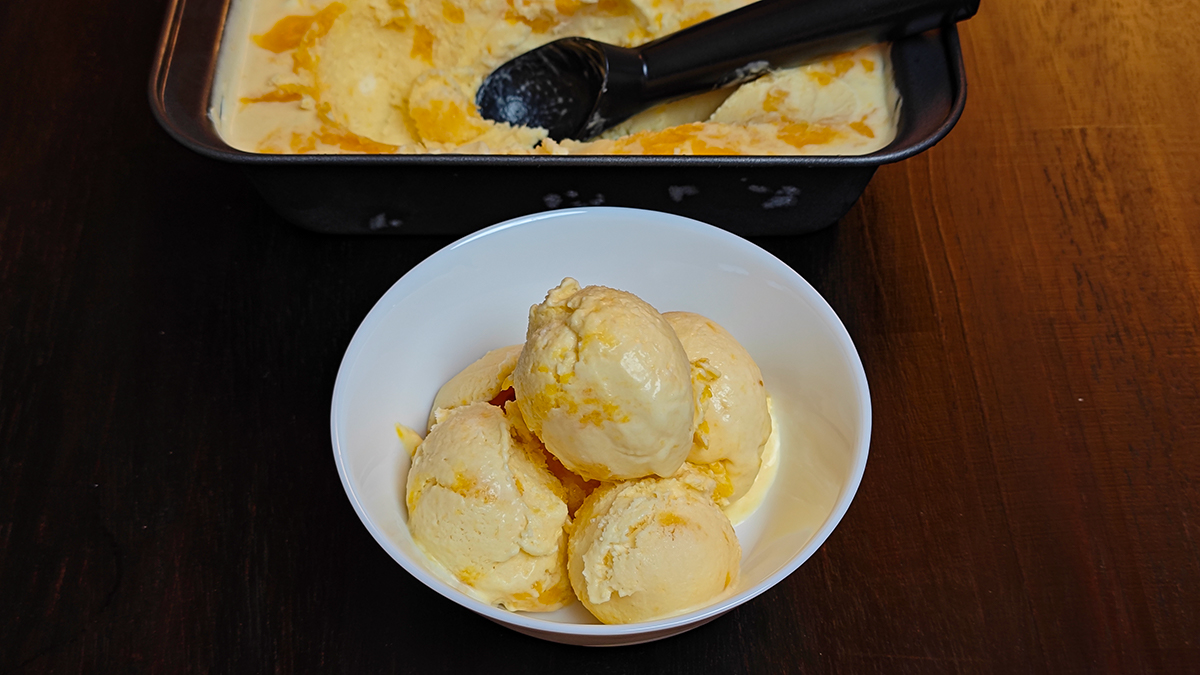Clem's No-Churn Ice Cream
Ice cream is a frozen milk food product which is aerated (air is incorporated in it). The Australia New Zealand Food Standards Code requires ice cream to be made from cream, milk, or both, and must have at least 10% milk fat. Modern ice cream benefits from food science and as a result contains various ingredients meant to give good mouth-feel and product stability. Ice cream is essentially a complex colloidal system (of fats, proteins, sugar) together with, very fine ice crystals, and some 30 - 50% air entrapped. Its components are subject to dissociation.
To create fine ice
crystals and entrap air bubbles in the mixture as the ice cream
is made, it is is churned during the freezing process, hence the
use of ice cream making machines. However, it is possible to
make no-churn ice cream by ensuring that air bubbles are
entrapped at the beginning of freezing. This is how I make
no-churn ice cream at home:
INGREDIENTS
- Thickened cream
(you can also try whipping cream) (Two cups).
Use cream that is at least 35% fat (look at the labelling when purchasing).
Double cream is between 45 - 55% in Australia - Sweetened condensed milk (150 g).
- Flavouring (I chose vanilla extract).
- A pinch of salt.
METHOD
- Hand or machine
whip up two cups of chilled thickened cream until stiff
peaks are visible.
Do not over whip or you will end up with butter.
Whipping is the critical step as good incorporation of air into the cream will make for an ice cream with good mouth-feel (a light texture) and ensure that air is not quickly lost during the whole production process.
Considering that ice creams have between 30 - 50% entrapped air, your cream should increase in volume during whipping in order that you get the right texture in in the end-product.
OPTIONAL:
You can slowly add 0.95 g of xanthan gum powder and 2.5 g of lecithin powder to the cream as you begin whipping it.
These are added as stabilizer and emulsifier (see below).
- Add two or more teaspoons
of vanilla extract.
- Add 150 g of
sweetened condensed milk.
Other recipes call for twice this amount.
Note that sugar content influences the formation of ice crystals in the ice cream (higher content inhibits the formation of large crystals - this is desirable for mouth-feel).
- Add a pinch of
salt.
- OPTIONAL
At this stage you can add fruit prepared in whatever way you wish.
I used fresh mangoes for:- a mango puree which is mixed through the cream with the other ingredients above;
- mango pieces which are added to the top of the cream after pouring out into a container.
Note that if the fruit bits are large, they will end up a frozen bits of icy material and reduce the smooth feel of your ice cream.
- Fold the added
ingredients into the whipped cream (do not over-handle the
whipped cream to avoid disturbing the air structure in it).
- Dispense the mix
into a suitable container and cover with kitchen foil.
- Place immediately into a freezer and leave for at least 8 to 9 hours.
You may want to achieve a mouth-feel in your ice cream that manufacturers formulate for. The two key ingredients in controlling mouth-feel of ice cream especially those which are stored in the freezer for some time are:
- Stabilizers
These are compounds which control the formation of ice crystals in the ice cream. Fine, tiny crystals are desired in ice cream. Large crystals when formed, gives a gritty mouth-feel and the ice cream does not taste smooth. Stabilizers control the formation of large crystals over storage time of the ice cream especially if the product is subject to freeze-thaw cycles as might be expected when the tub of ice creams is taken in and out of the freezer during the period of consumption time. Natural gums are routinely used as stabilizer e.g. guar gum, or xanthan gum (see http://clemkuek.com/photoalbum/photo696_2z.html for what I previously wrote about xanthan).

Xanthan gum is typically used at a concentration 1.5%. Thus, for the recipe here, add
0.95 g of xanthan powder at the stage where the cream is being whipped.
- Emulsifiers
Ice cream comprises fats finely dispersed in water (a colloidal system). To induce this dispersal to remain, emulsifiers are used in food processing. Ice cream is no different. In traditional ice creams, egg yolks are used as emulsifier (the lecithin in egg is the effective agent). In ice cream manufacture, plant lecithins are routinely used. Lecithin from soy beans is an example.

Lecithin is typically used at a concentration between 02 to 0.5%. You can try 0.4% in which case for this recipe you will need to add
2.5 g of soy lecithin powder, also at the cream whipping stage.

Clem's mango flavoured no-churn ice cream after
freezing
'

The ice cream scooped out
using a Zeroll type scoop (the black scoop seen behind)
Zeroll scoops have a fluid inside their handles which
helps to transfer heat from your hand
to make scooping and releasing the ice cream easier
Enjoy!
02 February
2024
Created
by Clem Kuek
